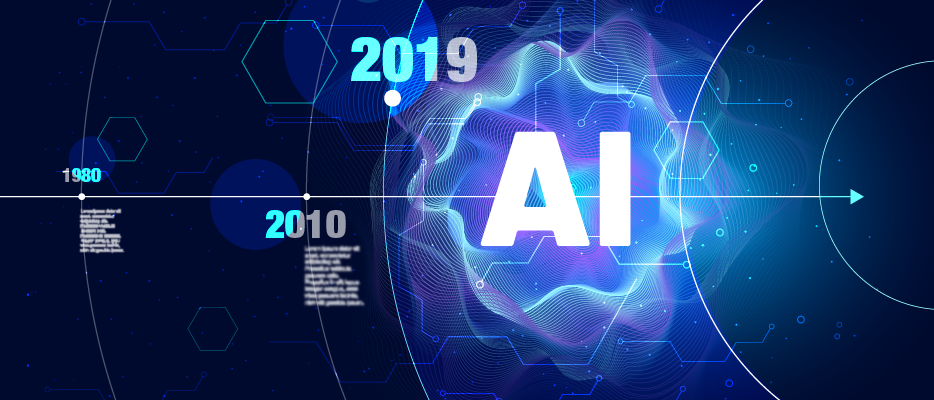The Year of AI is finally here
Neil Murphy
February 01, 2019

In this blog post, which first appeared in UKTech News, ABBYY’s global VP Neil Murphy predicts a watershed moment for AI adoption in 2019. Here are his six AI predictions everyone should read.
1. In 2019, AI will move out of the boardroom and into the enterprise
2019 will see AI move from a top-level discussion to start impacting on day to day work in businesses of all shapes and sizes. But this requires one thing of businesses: incorporating their AI and data strategies.
Data is most organizations’ biggest asset, and applying AI to data will enable businesses to gain insights from their data through content intelligence across a range of functions. In operational functions such as HR and finance we can already see automation and AI start to have an impact – by the end of 2019, we estimate that 60% of businesses will have combined their data and AI strategies in the finance function.
But the opportunity is also ripe elsewhere, such as in marketing and sales, where an AI-driven data strategy can transform the customer acquisition process, and in customer service, where customer experiences will be improved beyond recognition.
2. A third of organizations adopting AI will hire more IT staff in the next 6 months to keep up
The need for specialized skills to work with AI and automation technologies will drive a huge hiring spree in 2019 across the world – in Europe and the US, one in three businesses will need to hire more employees in their IT departments to accelerate their tech offerings in 2019.
Across industries from manufacturing and healthcare to non-profits, government, and financial services, the biggest challenge will be the same: upgrading their IT infrastructure and replacing legacy systems without failing on their digital transformation efforts. In order to achieve this, businesses will need to invest time and money into sourcing the best talent with the best skills for the job, or risk falling behind the competition.
3. AI will become more customer-facing – and we’ll know about it
In certain industries, 2019 will see AI move out of the darkness and into the light for consumers thanks to improved mobile experiences. We predict that 70% of banks will have started to digitally transform their onboarding process to include AI in a customer-facing role.
Bringing intelligent extraction into back end systems will enable digitally-savvy banks to make communications on their apps more cognitive and more contextual. Chatbots, for example, use this technology to bring AI directly to the consumer by providing immediate feedback that crucially doesn’t appear to have come from a bot. Only AI can provide truly intuitive onboarding for new customers who expect a seamless digital experience, and in 2019, banks will react to this by reaching into their pockets.
4. One in ten startups will use robots for customer interaction in 2019
Our 2018 research found millennials are increasingly likely to delegate speaking to customers to robots, and are much more inclined than their older counterparts to use robots for customer-facing tasks. 1 in 6 millennials hates speaking to customers, compared to less than 1 in 20 over-55s, which could explain why so many companies have not yet adopted AI for customer interaction.
However, the growing number of millennial-led startups will use technological advancements in AI and robotics to start delegating these tasks to robots in 2019, from fintechs to online marketplaces to technology providers.
5. Older employees will become more inclined to automate
As business leaders (and their HR departments) will spend lots of time and energy selling automation internally in 2019, older employees – who our research found are much less inclined to automate part of their jobs – will start to buy into automation.
Our research found that over 55s are much more likely than millennials to prioritize mundane tasks, such as electronic filing and maintaining databases, that are easy and practical to automate. Thus, we can expect to see older employees start to hand over these tasks to automation, as their relationship with AI strengthens.
By the end of 2019, we think that half of older workers will begin to turn to automation for the tasks they know can be carried out by robot colleagues.”
6. RPA will become mainstream – but you’ll need to up your data capture game
In 2019, CIOs and IT leaders will realize that to truly benefit from the impact of RPA on their business, they need to massively improve their capture capabilities. RPA and data capture work better together – the bangers and mash of enterprise IT. Together they can help solve the biggest challenges facing AI-adopting IT departments – how to improve the quality of data, and how to use this data to bring the most benefits to the business.
Learn more about ABBYY technologies and trends.

